Are you in the market for a new office chair but worried about the cost? The Haworth Soji might just catch your eye—it’s priced at 50% less than Haworth’s flagship chair, the Fern. But does a lower price mean better comfort? Stick around as I break down each area of the chair to see if it truly offers the best value for your money.
Full Disclaimer: We are an office furniture dealer and sell some of the products we review. To learn more about the products we sell, our review process and why you can trust us, please visit: Why we’re different. Who is BTOD.com and The Learning Center?
Haworth Soji Chair Links
1. Find Your Seat Comfort
I’ll start with the most important part of a chair, seat comfort. When you’re looking in this price range the expectation shouldn’t be that it ranks with the top chairs like the Fern or Leap. But if you can’t stay in a chair’s seat for long hours, then nothing else really matters. And the Soji gets my stamp of approval here. The size of the seat and adjustments available make this a chair suitable for a wide range of people. The seat is relatively flat, with a waterfall front edge.
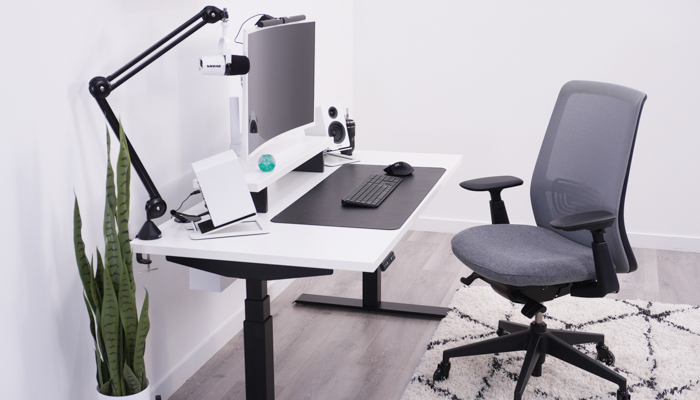
The flatness gives you the impression that it’s a larger seat than it really is, in contrast to the Leap seat which has more contour. That’s not to say I like the Soji seat better, but if you’re someone who doesn’t like the cradled feeling, then this is a better choice. The waterfall front edge looks like it has a sharper edge in the foam, but I never feel like there’s extra pressure under my legs.

Don’t assume a firm seat is a bad thing. Firm seats can be very comfortable for long periods when sitting ergonomically and taking occasional breaks. The Soji is supportive, and I never felt like I was sinking through the foam. I did some sit tests between the Fern and Soji and the biggest difference I found was that the Fern had more give in the tailbone region, making it more comfortable.
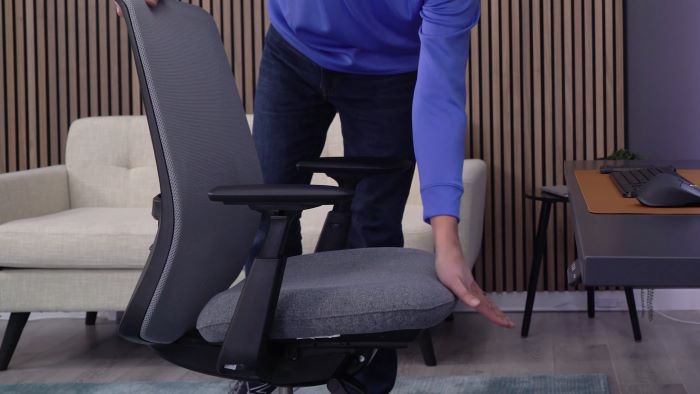
This is similar to how we’ve found that the Amia has an extra cush in the tailbone region over the Leap. The Fern is 100% more expensive than the Soji, but the Fern seat is not as comfortable. Now looking at some chairs that are on the other end of the spectrum, you can purchase the Colamy Atlas chair for half the price of the Soji. The Atlas seat is only slightly less comfortable than the Soji.
2. Back Comfort Essentials
Moving to back comfort, I found this was my favorite part of the chair. I’ve gone on record as a big mesh chair fan which includes chairs like the Aeron, Zody and Humanscale. Important aspects of mesh backrests are always going to be the tightness and quality of the mesh and how the frame comes into contact with your back.

It has a great balance of elasticity and support. I find myself sinking into the mesh just right. When the mesh is too loose, you might end up feeling the seat frame against your back. The Aeron chair tends to be on the firmer side, while Haworth’s Very model can feel too loose. It’s tricky to recommend chairs based on user height since everyone’s proportions vary—like my own long legs and short torso. However, the backrest on this chair was tall enough for me, with a few inches to spare.

The backrest width suits my size, but anyone wider may feel the frame if they shift off-center. Haworth’s warranty covers up to 325 pounds, but those with a larger frame may still find this chair uncomfortable. The backrest includes a built-in lumbar curve, good for those who need minimal support. I prefer strong lumbar support, so adding the additional height-adjustable support for $35 was an easy choice for me.
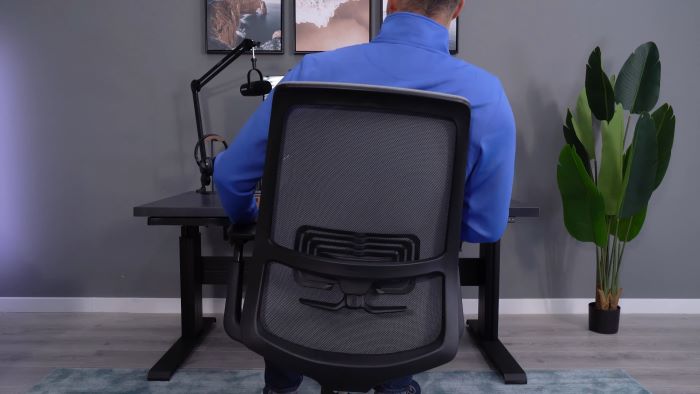
While it doesn’t offer much support at the lowest setting, positioning it just right in the curve of my back provides great comfort. Comparing it to other chairs, the Haworth Fern stands out primarily due to its technologically advanced and flexible backrest, justifying its higher cost. The Atlas has a similar built-in lumbar curve as the Soji, but the Soji’s adjustable system is better. Overall, the Soji’s backrest makes sense at its price point.
3. Arms at Ease
Arm comfort can be a big deal breaker for me. There are a few things to consider. Adjustability, arm pad comfort, and build quality. The Soji shines in all these areas. Starting with adjustability, the included 4-way adjustable arms offer good ranges all around, with depth – width – pivot – and height adjustment. The arms can’t match the adjustment range of the Fern, especially in the pivot, but the ranges are plenty large for me to sit ergonomically.
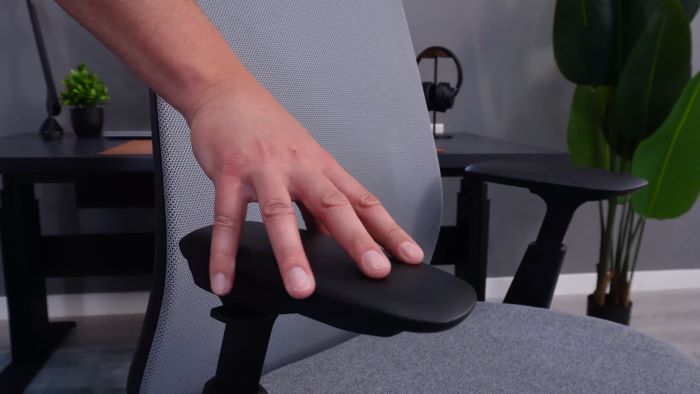
The arm pads feature a stylish, contoured design with waterfall edges, softer in the center and firmer at the edges. This design works well since you typically don’t put much weight on the edges but need the center to be nice for elbow support. The arm build quality is solid with minimal play. The Fern has a similar amount of play.
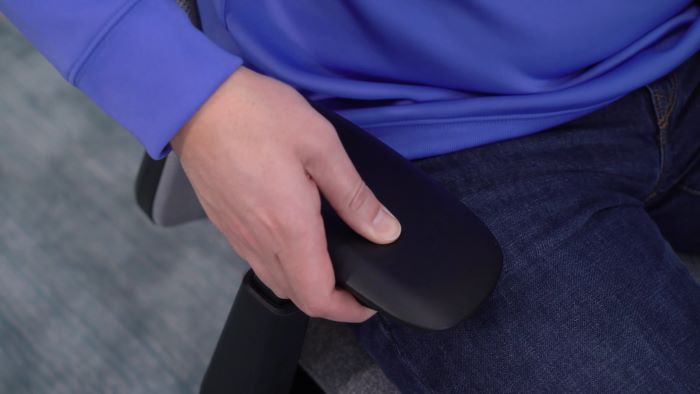
The Colamy Atlas arms tend to be loose, moving unintentionally. One drawback is the significant gap between the arms and backrest when reclining, due to the arm connection mechanism. While the arm depth adjustment helps somewhat, it’s a notable flaw in an otherwise great chair.
4. Adjustment Options
The Soji boasts an adjustment package comparable to top-tier models, with an excellent seat height range suitable for individuals between 5’7” and 6’4”. Even though it’s rare for me to feel short in a chair, I can almost dangle my feet from the Soji. Its seat depth range is large enough to comfortably accommodate my long legs.
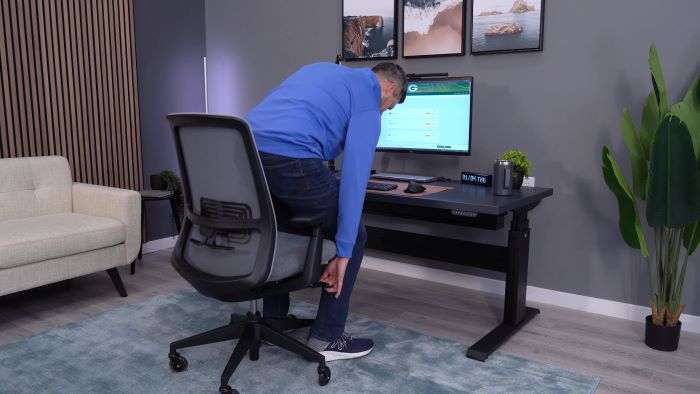
When the seat depth is fully extended, there’s a slight gap between the seat and back, noticeable only when fully reclined. The synchro-tilt recline is smooth and ergonomic, though not as advanced as the Fern chair. The Soji offers the option to lock upright or adjust tension for free recline mode.
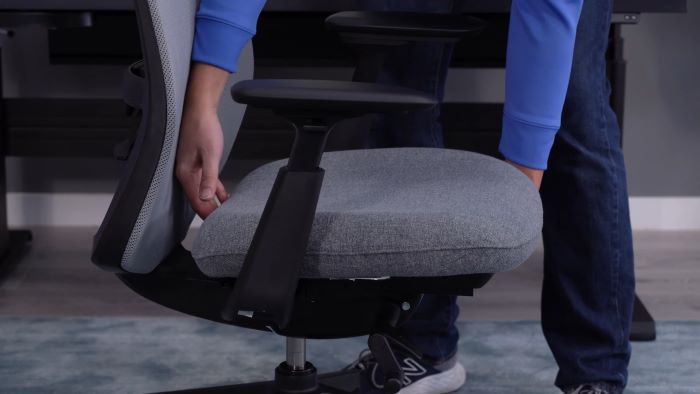
I don’t personally miss having a multi-position tilt lock setting, but it is a notable exclusion that many chairs in this price range have. For an additional $24 you can forward tilt functionality. The chair I’ve been testing didn’t have this feature and considering how straight up the backrest can lock, I didn’t feel I was missing anything.
5. Solid Build
The build quality is exactly what you would expect for this price range. All of the parts of the chair fit well together with nothing standing out as low quality. The fabric on the seat has a more wool feel to it, falling a little short of the premium fabric on the Fern chair; but it’s the appropriate quality for a mid-range chair. The mesh material follows in this theme.
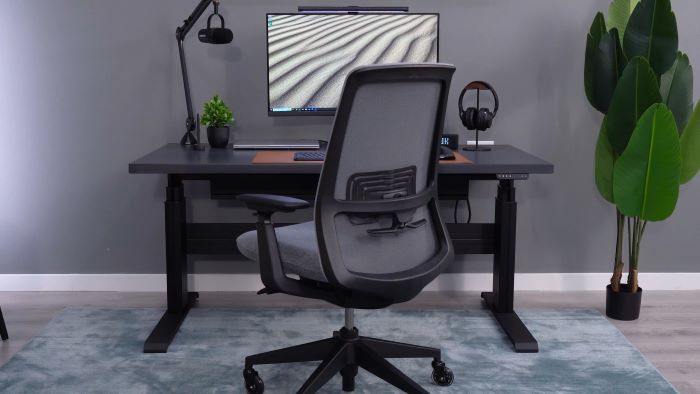
The Soji represents a significant improvement over the Colamy Atlas but falls short of the Fern’s standards. It strikes a perfect balance in terms of value. Haworth’s tranquil and natural aesthetic, evident in color choices like Stone, Ocean, Clay, and Juniper, sets it apart. The style and quality of materials in this price range are major advantages.
6. Policies
Haworth’s policies and services for the Soji justify its price tag. The chair arrives fully assembled, unlike the $300 Colamy chair that requires some assembly. You also have a 30-day trial period with free returns if you don’t love it. Plus, it’s backed by a 12-year warranty covering all the major components. This is similar to the more expensive Fern model, giving confidence in the product.
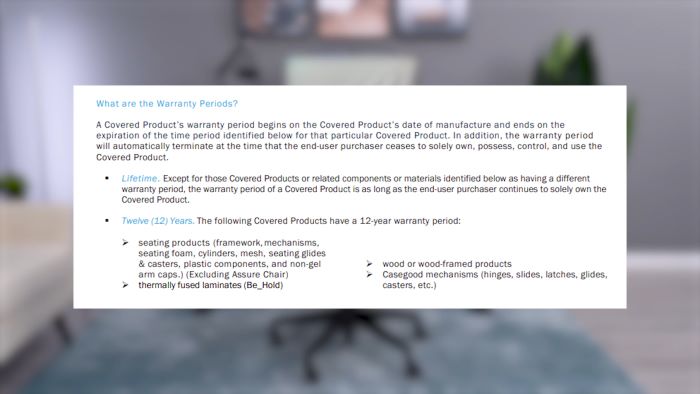
Bottom Line
Ultimately, while the Soji may not have any standout features that I’m overly excited about, there’s nothing I DISLIKE about it either, making it a solid choice within its price range. I feel confident recommending this chair to anyone because of its adjustability and lack of any pain points. Adding in the great policies, the Soji emerges as a better value than the Colamy Atlas.




